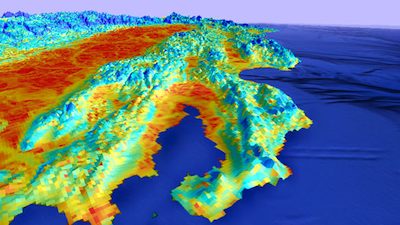 Research published last week in the journal Nature estimates the “velocity of climate change,” a measurement of how quickly rising temperatures force ecosystems to migrate in order to survive – and the likelihood that some species within an ecosystem will face extinction.
Research published last week in the journal Nature estimates the “velocity of climate change,” a measurement of how quickly rising temperatures force ecosystems to migrate in order to survive – and the likelihood that some species within an ecosystem will face extinction.
The report says that land-based ecosystems will need to move an average of one-quarter mile (420 meters) annually to cooler areas over the next century if the plants and animals are to remain in their “comforts zones.”
Using projections from the Intergovernmental Panel on Climate Change (IPCC) of greenhouse gas emissions over the next century, scientists from the California Academy of Sciences, Carnegie Institution of Science, Climate Central, and the University of California at Berkeley calculated the speed at which ecosystems must shift based on the IPCC’s “A1B” scenario – considered an intermediate level of anthropogenic climate change that projects an average 2.8 degree Celsius rise in global temperatures this century (5.04 degree Fahrenheit), within a range of 1.7-4.4 degree C (3.06-7.2 degree F).
“Expressed as velocities, climate-change projections connect directly to survival prospects for plants and animals,” said study co-author Chris Field, director of Carnegie Institution’s Department of Global Ecology. “These are the conditions that will set the stage, whether species move or cope in place.”
Most effected are flora and fauna on flat ground such as deserts, savannas, grasslands, mangroves, and lowland tropics. In these areas, species may need to move as much as one kilometer a year. A “survival of the fittest” scenario will play out where more resilient species and those that can migrate fast enough will survive. Less adaptable and slower moving species – such as plants – face possible extinction.
In these more vulnerable habitats, species will have to move very far, and that means very quickly, in order to track their preferred climate envelope as climate changes,” said Healy Hamilton, director of applied biodiversity informatics at the California Academy of Sciences.
Mountains and valleys will have the lowest velocity of temperature change, a situation where a small change in altitude can bring a wide fluctuation in temperature. Species therefore won’t have to move as far to maintain their comfort zones.
The study focuses on the movement of climate zones, not species, making it difficult to project the fate of an individual plant or animal. Wildlife in areas with low projected climate change velocities are not necessarily “out of the woods” in terms of protection from ecosystem shift. Many habitats, such as broadleaf forests, are often fragmented and relatively small, making species migration more difficult.
The study points out that most protected areas – parks and nature preserves – are generally too small to cope with projected shifts in habitat. Less than 10 percent of these protected areas are expected to maintain their current climate conditions within their boundaries by the end of the century.
Hamilton pointed out the importance of creating “wildlife corridors” that provide a path from increasingly hostile climate zones to more habitable ones. A narrow strip no more than a few hundred meters wide could link one national park to another.
This paper reinforces just how important it is to establish wildlife corridors soon,” Hamilton said. “Species are already responding to the climate change of recent decades. And we don’t have a corridor policy that has been implemented that’s going to accommodate those range shifts.”
“One of the most powerful aspects of this data is that it allows us to evaluate how our current protected area network will perform as we attempt to conserve biodiversity in the face of global climate change.”
The study says that climate change will cause such a rapid change in temperature and climate that nearly one-third of the globe could experience climate velocities that outpace even the most optimistic speeds for natural plant migration.
The research helps illustrate how the world future generations will inhabit will be markedly different – and likely less biologically diverse – than the in which we now live.

Additional sources and further reading:
Guardian
ClimateWire (subscription)
CBC News


